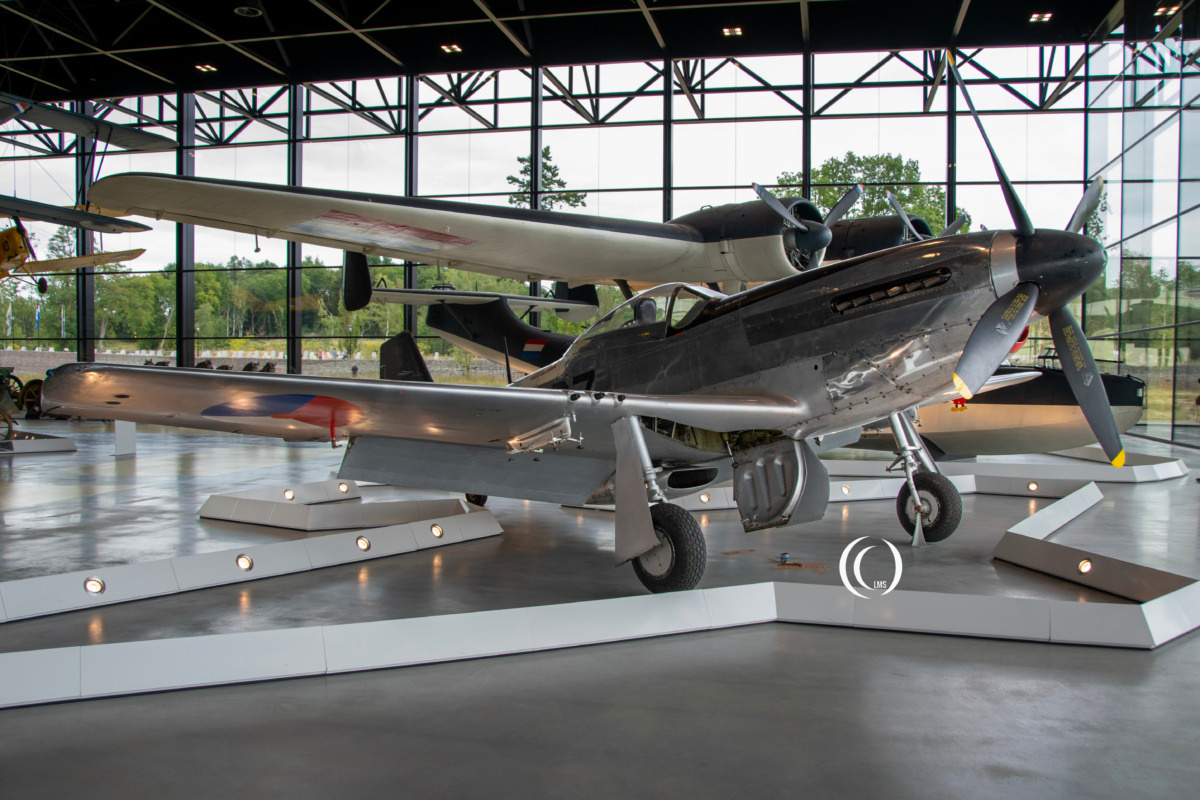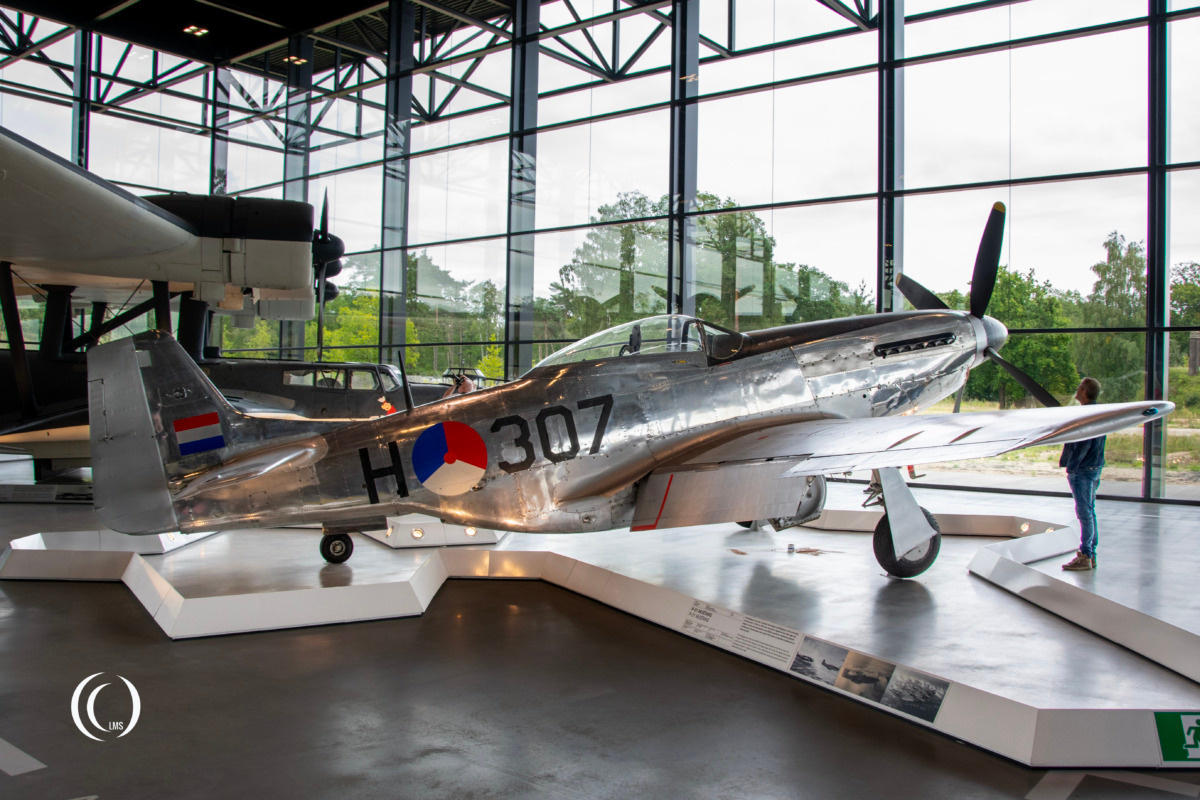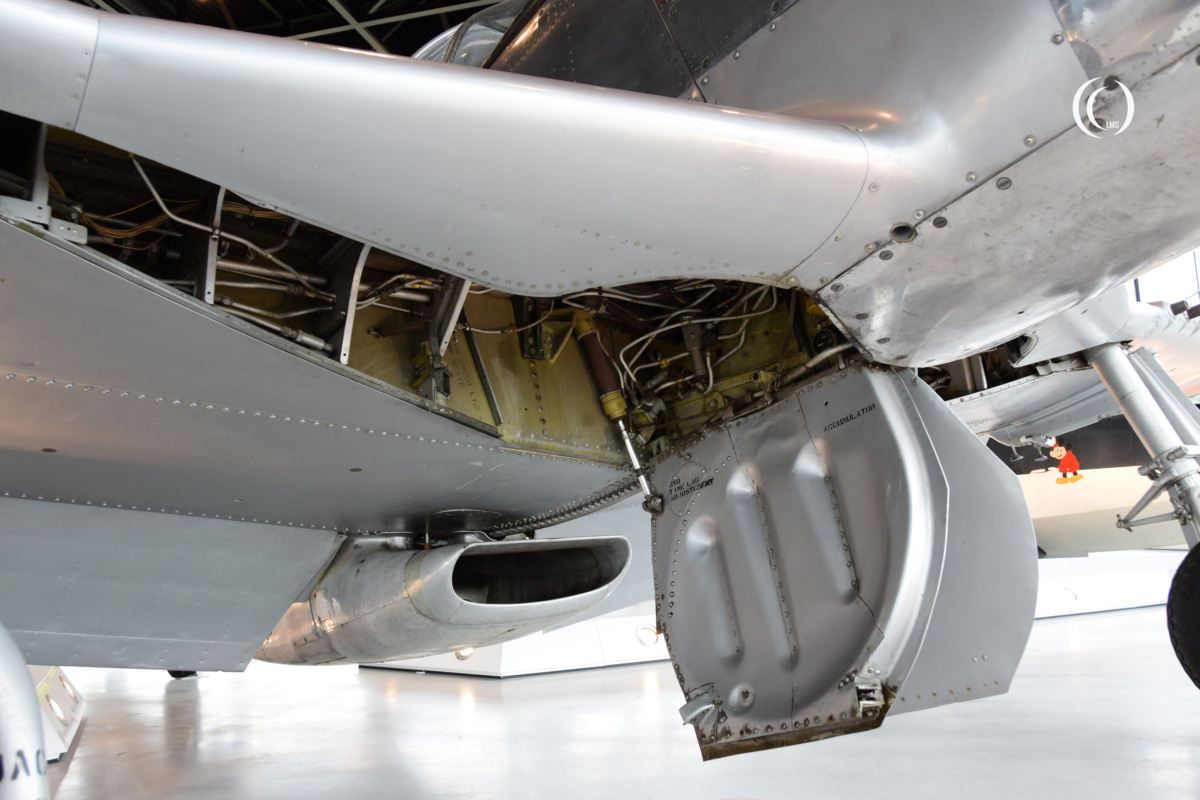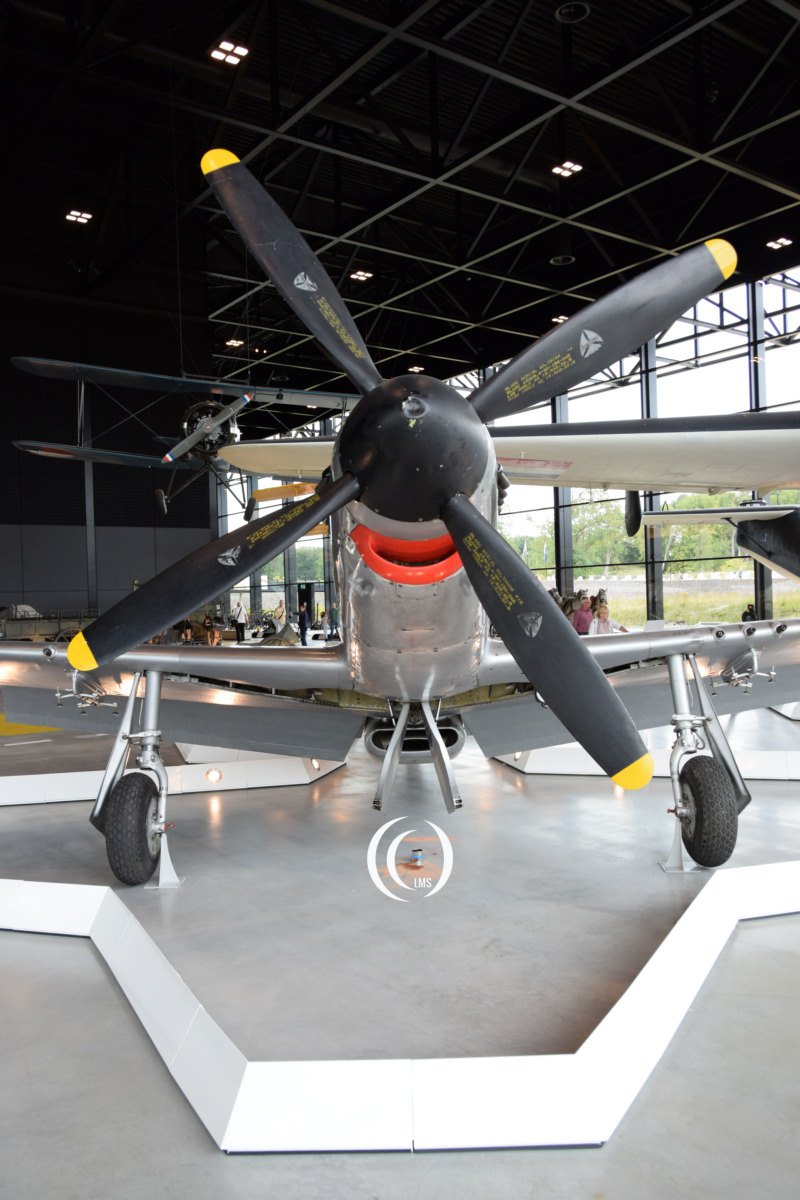The North American P-51 Mustang was an American long-range, single-seat fighter and fighter-bomber designed in April 1940 to the requirements of the British Purchasing Commission (BPC) for the RAF. While the RAF initially asked aircraft manufacturer North American Aviation (NAA) to build them Curtiss P-40 fighters under license, the company proposed this more modern fighter. The first flight of the prototype was on 26 October of the same year. The aircraft was given the name “Mustang” by the BPC of the RAF. The Americans designated the fighter with P-51. They also named it “Apache”, but soon dropped the name in favor of “Mustang”.

Performance
Initially designed to use the Allison V-1710 engine, the Mustang had limited high-altitude performance in its earlier variants. Therefore the Mk I was limited to tactical-reconnaissance and fighter-bomber missions by the RAF. But when the Allison engine was replaced with a Rolls-Royce Merlin in the Mustang Mk III (P-51B/C) model, the aircraft’s performance at altitudes above 15,000 ft transformed into fighter characteristics, allowing it to compete with the Luftwaffe’s superior fighters like the Focke-Wulf Fw-190 and the Messerschmitt Bf-109, even without affecting on it’s range.
The final Mustang version, the P-51D, was powered by the Packard V-1650-7, a license-built version of the two-speed, two-stage-supercharged Rolls-Royce Merlin 66, and armed with six .50 caliber (12.7 mm) AN/M2 Browning machine guns.

Bomber escort
Because of its range the Mustang proved ideal for bomber escort missions. On 22 October 1942 the aircraft made history as the first RAF single-seat fighter to fly over Germany during World War II, while escorting 22 Wellington bombers during a daylight raid. From 1943 the USAAF’s Eighth Air Force used the P-51 to escort bombers in her raids over Germany, while the British 2nd Tactical Air Force and the USAAF’s (United States Army Air Forces) Ninth Air Force used Mustangs in a fighter-bomber role to ensure Allied air superiority in 1944. During the course of the war the Mustang P-51 proved itself in almost all theaters.
The P-51K in Soesterberg
The North American P-51K Mustang (C/n 111-30258) on display at the National Military Museum (NMM) in Soesterberg, the Netherlands, started it’s short career in the service of the USAAF 82nd Fighter Squadron from February 25th 1944 (serial number 44-12525). In 1946 it was bought by the Aerospace faculty of the Technical University Delft, the Netherlands, where it was slowly dismantled until in 1966 it was saved from further deterioration and restored by former Dutch Air Force members.
The Dutch H-307 registration was put on at this time, while a member of the group had worked on a similar Mustang P-51K in Dutch service in Indonesia.





